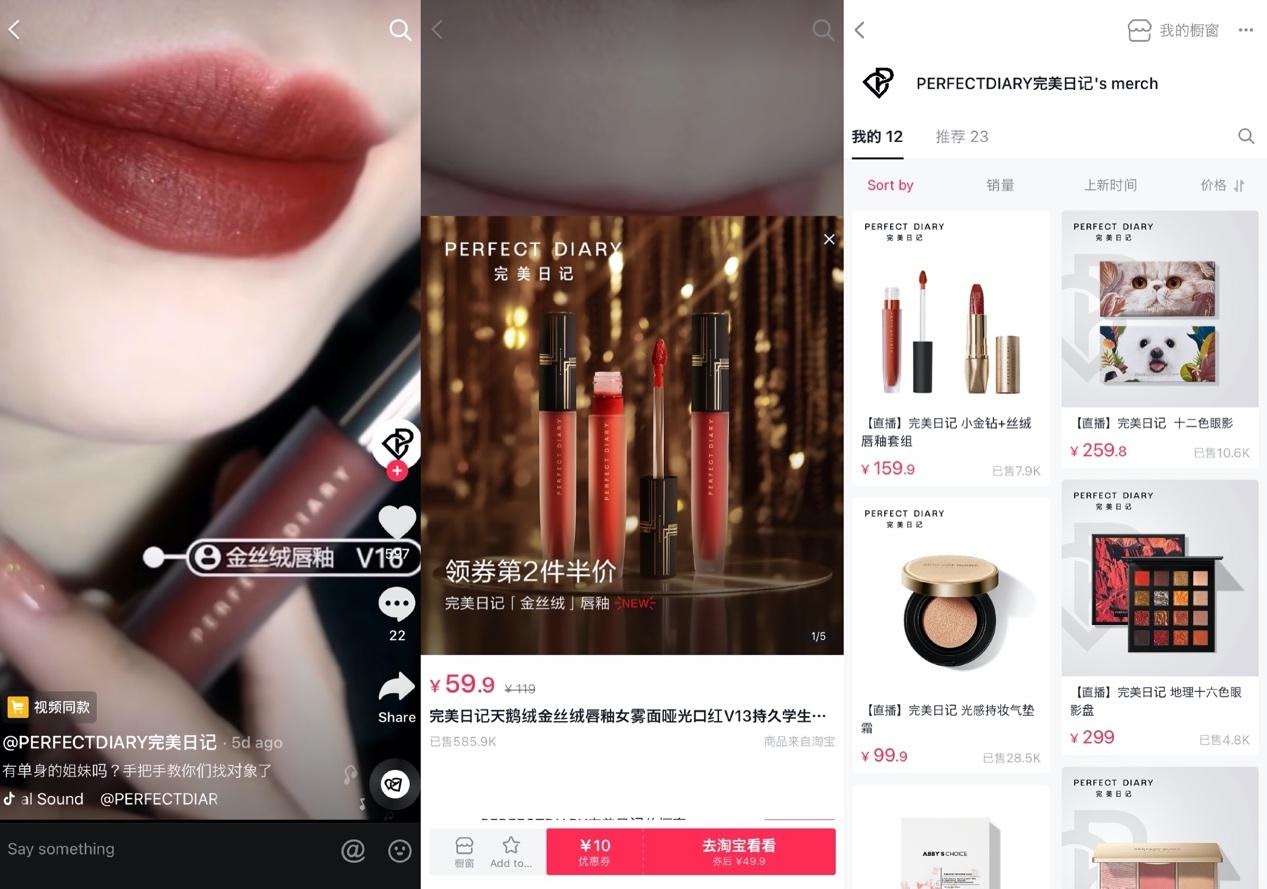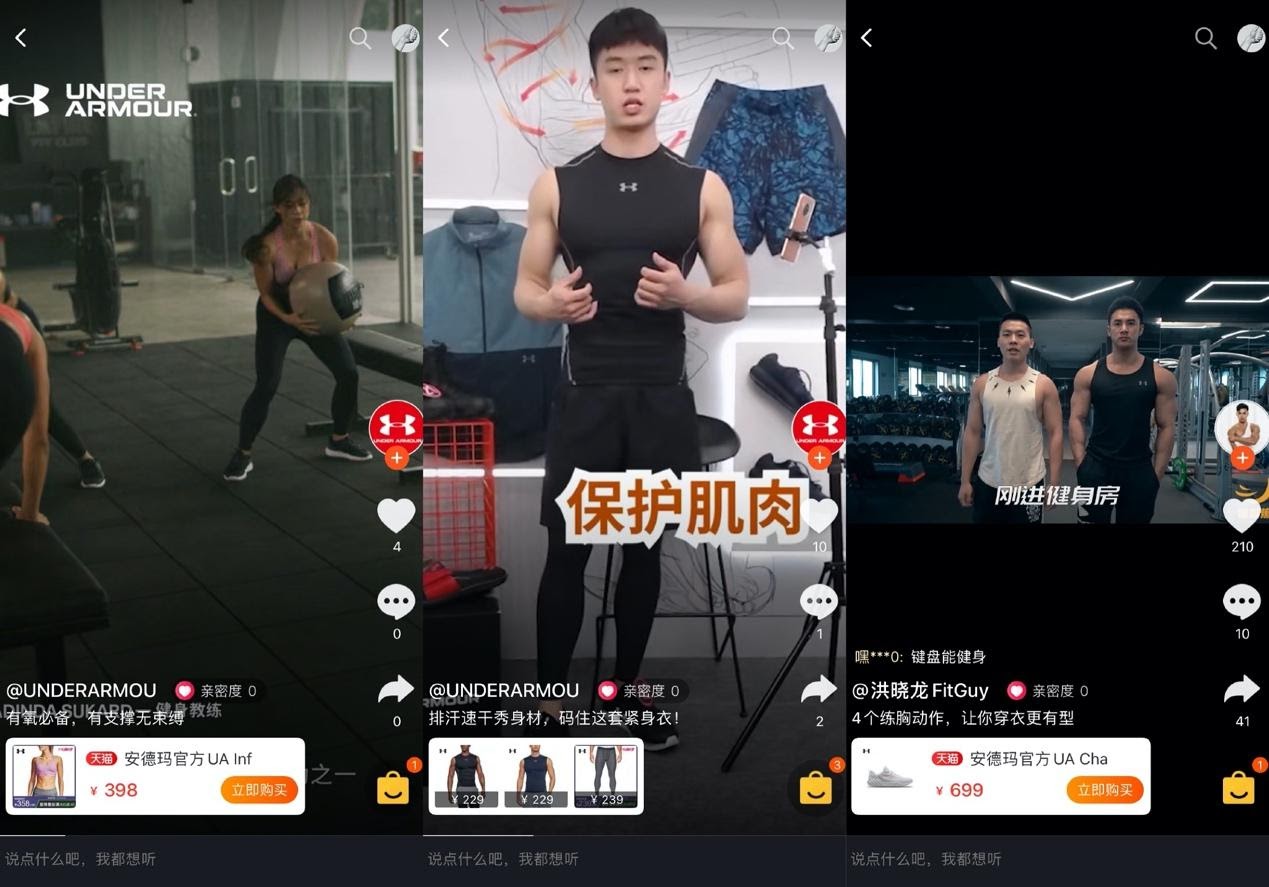
Retail
Taobao is Doubling Down on Short Videos. What Does This Mean for the Industry?
by
Alexander Wei | September 30, 2020
The Largest E-commerce Marketplace in China is set for a major update ahead of Singles Day, with short videos gradually replacing text and image as the main form of product showcases. What should brands be taking note of and how can they adapt their strategies?
It has been reported that Alibaba will be rolling out a major update for its Taobao mobile app ahead of Singles Day, China’s biggest shopping festival. As the main gateway for consumers to enter branded Tmall stores and access Luxury Pavilion, changes to the Taobao ecosystem will reverberate through the industry.
A number of changes are slated to take place, including the relocation of banner ads previously found at the top of the page (Zuan Zhan), and the reshuffling of entry-points in the recommendation feed. The most significant change, however, is the weightage of content-related elements – mainly short videos and livestreaming – on the homepage.
With the removal of categories from the home page, the recommendation feed (which consists of both product listings and videos) now takes centre stage. Feeds are built up with content, and this change further iterates Taobao’s focus on its content offering. Short videos are will also reportedly gradually replace the text-image model.

Ever since offline foot traffic in China took a hit earlier this year due to COVID-19, competition on the e-commerce front has been heating up. Content that supplements the online consumer journey in terms of brand and product discovery – especially livestreaming and short videos, which are highly engaging and interactive – has been key in fueling conversions. As such, the lines between e-commerce and content platforms are starting to blur, and Taobao, as China’s most pervasive e-commerce player, is naturally jumping on this opportunity. Short videos on this platform will play an essential role in driving traffic and strengthening user stickiness for the foreseeable future.
The Battle of Short Video Giants
When opportunities arise, everyone scrambles for a slice of the action.
Douyin and Kuaishou, China’s two short video giants, have amassed nearly 800 million cumulative daily active users. This large amount of traffic has helped to facilitate conversions – Kuaishou announced that it received nearly 500 million e-commerce orders earlier in August. At the same time, Douyin’s parent company ByteDance, quietly formed an e-commerce business unit just head of this year’s 618 shopping festival. In addition, Douyin recently announced that livestreams on the platform will cease to support all third-party e-commerce links (including links to Taobao/ Tmall), from 9 October. It will instead only showcase products from its native Douyin Store – the platform’s own integrated e-commerce feature.

While short video platforms are attempting to shed their dependence on third-party e-commerce sites, social platforms like WeChat are improving their ecosystem by introducing short videos to increase traction with brands.
Launched early this year, WeChat Channels provides brands and creators with a new content distribution channel. Besides complementing the content structure of the WeChat ecosystem, Channels also allows brands to link video content directly to their WeChat Official Accounts. However, unlike standalone video apps such as Douyin and Kuaishou, Channels (which is nested within the WeChat ecosystem) currently offers limited opportunities from a commercial standpoint. But given its synergies with Official Accounts and Mini Programs (which also offers e-commerce functionality), it should not be underestimated. It should also be noted that WeChat is currently beta testing an advertising function for Channels on the Moments feed – in time, this will amplify the marketing capabilities of Channels.
Taobao’s short video strategy has been in the works for years. From as early as 2016, Taobao President Jiang Fan shared in an interview that he believed that “in the future, 90 per cent of content on Taobao will be videos – including livestreams.” It appears that with this update, Taobao is making good on its earlier declaration. But that being said, placing emphasis on short videos is not enough in this day and age. As the China digital ecosystem matures, so do the players and consumer habits. Taobao needs to find its space in all of this, and evolve its product offering accordingly.
What Do Short Videos On Taobao Look Like?
While there may be a growing number of players in the short video industry, Taobao still manages to set itself apart from the rest based on its content focus. For instance, videos on Kuaishou tend to be aligned with the tone of the platform, having characters, storytelling and dramatic twists. But Taobao, being primarily a transactional platform, serves up videos that are more conversion focused, including product introductions, demonstrations and reviews.
Currently, Taobao largely hosts professional user generated content (PUGC), with very little content created by ordinary users (consumers). Brands, especially established fashion and beauty brands, tend to reuse campaign or product videos on Taobao. Others, like Lululemon and Under Armour for instance, repurpose their lengthy livestreaming sessions into short, digestible video clips about specific products. Taobao KOLs also tend to collaborate with brands to create product demo and review videos, which are then pushed to different audience types through advanced segmentation with the purpose of increasing emotional resonance with consumers.

The updated interface sees the recommendation feed being brought up to the first screen, elevating it to the same level as the Search function product category entry points like Ju Hua Suan (聚划算) and You Hao Huo (有好货). This comes after the app’s last major update, which brought the recommendation feed up from the seventh to the second screen. Revamps over these last couple of years have underscored the transformation of Taobao mobile from a catalogue-esque marketplace to a highly-customisable e-commerce platform, where content is of utmost importance.
It has also been reported that short videos will eventually replace the text-image format in feeds, and that the platform’s built-in content marketing hub Weitao will include a “Discover” tab, which exclusively showcases short videos. Given this renewed focus on short videos, merchants are said to be required to have a certain number of short videos uploaded ahead of Singles Day in order to get a recommendation slot on the Taobao front page. On top of this traffic support, Alibaba’s Video Generation Algorithm technology can also help automatically transform brand assets into short videos that comply with the platform requirements.
Building a Targeted Short Video Strategy
Ever since Taobao’s decision to focus on short videos, it has successively launched initiatives including the Taobao Second Floor “A Thousand and One Nights” web series in 2016, and standalone short video application "Lu Ke" later in 2018 (since removed from Apple’s App Store and the Google Play store). But it is not until this most recent update that Taobao’s ambitions on the short video front have really been realised.
With this update, however, it is becoming clear that short video platforms are beginning to mature and grow in different directions. This will, in time, force brands to rethink their short video strategies. Instead of developing short videos to be repurposed across different platforms, brands will have to adapt the content to each platform – especially since they serve different purposes along different stages of the consumer journey. For a transaction-driven platform like Taobao, content within videos has to be more focused on actual product uses, reviews and recommendations that will drive direct conversions. Platforms like Douyin, on the other hand, that are more suitable for awareness generation and brand building would then call for more inspirational and engaging short video content.
With 5G deployment accelerating, consumers will soon have even faster and smoother access to short videos on-the-go, which is probably part of the reason why brands and platforms are all doubling down on their short video offerings of late. This will inevitably change the content consumption patterns of shoppers, and brands will have to adapt their communication strategies accordingly – starting with a bigger focus on short video and rich media content.
Cover Image: Reuters

